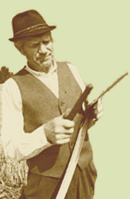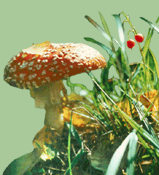Eurooplaste tähelepanu on alatasa köitnud Jaapani saarestik, eraldatus mandrist, väga mitmekesine loodus ja omapärane kultuur. See suletud ühiskond hakkas Euroopale avanema alles 17. sajandi algul. Üks avastusloo tahke on Jaapani floora tundmaõppimine ja sealsete taimeliikide jõudmine Euroopasse.
16. sajandil tõusid portugallaste kõrval esirinda Hollandi meresõitjad, kellele kuulub suur osa Ida-Aasia ja Vaikse ookeani mereteedel tehtud reisidest ja avastustest. Juhtorganisatsiooniks sai 1602. aastal rajatud Hollandi Ida-India kompanii (holl. Vereenigde Oostindische Compagnie, VOC) [2]. Sellest kujunes 1669. aastaks maailma rikkaim eraõiguslik kompanii, kellele kuulus üle 150 kauba- ja 40 sõjalaeva, 50 000 teenistujat ja eraarmee 10 000 sõduriga. Ametlikult lõpetas kompanii oma tegevuse 1798, lõplikult kaks aastat hiljem.
3. Dwarf Trees from George Meister's. Der Orientalisch-Indianische Kunst und Lust-Gärtner: http://www.phoenixbonsai.com/pre1800Refs/Meister.html
4. Gilbert, Marc Jason 2007. Paper Trails: Deshima Island: A Stepping Stone between Civilizations: http://www.historycooperative.org/journals/whc/3.3/gilbert.html
5. Michel, Wolfgang 1986. Die Japanisch-Studien des Georg Meister (16531713). Dokufutsu Bungaku Kenkyûu, No. 35: 150. http://www.flc.kyushu-u.ac.jp/~michel/publ/aufs/26/26.html.
6. Michel, Wolfgang 1999. Neue Materialien zum medizinischen Personal der VOC-Niederlassung in Japan. Genbun Ronkyû Studies in Language and Literature, Kyushu University, Fukoka, 10: 179194. http://www.flc.kyushu-u.ac.jp/~michel/publ/aufs/60/60.htm
7. Michel, Wolfgang 2005. On the background of Engelbert Kaempfers studies of Japanese herbs and drugs. Journal of the Society of Medical History. 48 (4): 392720. http://www.flc.kyushu-u.ac.jp/~michel/publ/aufs/67/67.pdf
8. Michel, Wolfgang 2007. Medicine and Allied Sciences in the Cultural Exchange between Japan and Europe in the Seventeenth Century: http://www.flc.kyushu-u.ac.jp/~michel/publ/books/26/26.htm
9. Michel, Wolfgang 2007. Opperhoofds and Medical Staff at the Dutch Factories Hirado and Dejima, Japan.
http://www.flc.kyushu-u.ac.jp/~michel/serv/histmed/dejimasurgeons.html
10. Kaempfer, Engelbert 2007. Die freie Enzyklopädie: http://de.wikipedia.org/wiki/Engelbert_Kaempfer
11. Mac Lean, J. 1978. Von Siebold and the Importation of Japanese Plants into Europe via the Netherlands. Japanese Studies in the History of Science, Tokyo, 17: 4379.
12. Siebold, Philipp Franz von 2007. From Wikipedia, the free encyclopedia. http://en.wikipedia.org/wiki/Philipp_Franz_von_Siebold
13. Stearn, William T. 1999. Engelbert Kaempfer (16511716). Pioneer investigator of Japanese plants. Curtiss Botanical Magazine 16 (2): 103115.
14. Thijsse, Gerard 2007. The history of the Herbarium Japonicum Generale in Leiden: http://www.um.u-tokyo.ac.jp/publish_db/Bulletin/no41/contents/001_01.htm
15. Universität Leiden. Hortus Botanicus. From Wikipedia, the free encyclopedia. 2007. http://en.wikipedia.org/wiki/Hortus_Botanicus_Leiden
| 

![[IN ENGLISH]](images/gb.gif)





